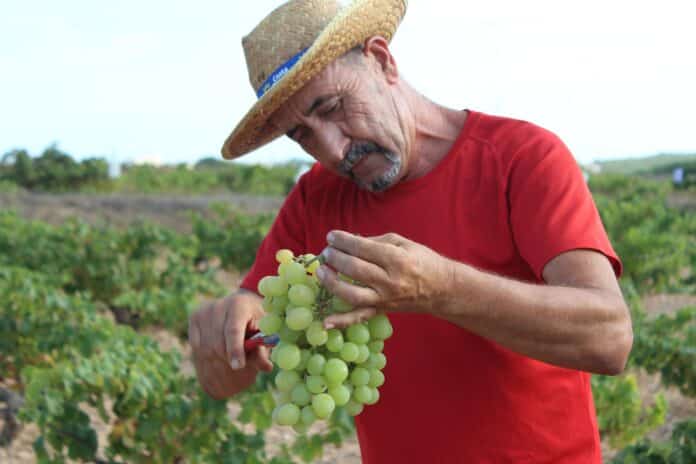Local farmer Cayetano Gil has called the La Mata grape harvest “the worst possible return,” with the plots of the La Mata Natural Park, between Torrevieja and Guardamar del Segura, showing a loss of 50% in it’s production.
Problems such as drought, lack of generational change, pests, the presence of animals looking for food – this year they are doing much more damage – and the legal complexity that exists with the land, which all make it increasingly difficult to keep alive this wine-growing activity that has been so important in this territory since time immemorial.
The August harvest has yielded between 10,000 and 12,000 litres, as opposed to 50,000 in 2023. In recent years, wineries in La Mata and hectares planted with vineyards within the Park have also been lost, going from around 30 to the current 20 or so.
In these, we now have two grape varieties very typical of the area, Moscatel and Merseguera, but there are many more, in total up to twenty. These vineyards have a unique flavour and character as they are planted about 500 metres from the sea, impacted by a capricious Levante, at a low altitude, on land with tradition, with its own history associated with the vine.
The centuries linked to this crop has been modernised, but they are still worked in an artisanal way. Because it is tradition and culture, the hallmark of this celebrated corner of Torrevieja. A trajectory that is valued by the researcher and disseminator of the history of local heritage, Ana Meléndez, through ‘Lagunas de Torrevieja y La Mata, Patrimonio cultural y poblaciones’ (a Facebook and Instagram page), bears witness to the importance and representation of this treasure, which offers unique wines that are highly prized inside and outside Spain.
“A thousand-year-old stronghold” is what Ana Meléndez refers to when describing its history, how strains from other places arrived here, how it is grown and the vocabulary shared by local farmers. Because it is more than just growing. In this sense, the farmers’ association that defends the present and future of this essential crop says it needs more support from the administration if it is to survive, although many already consider it lost.





